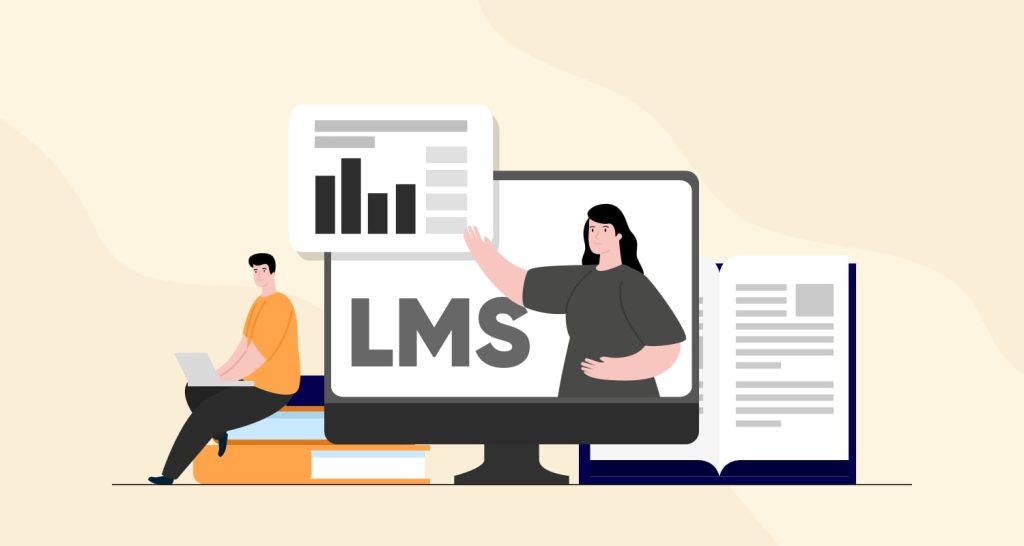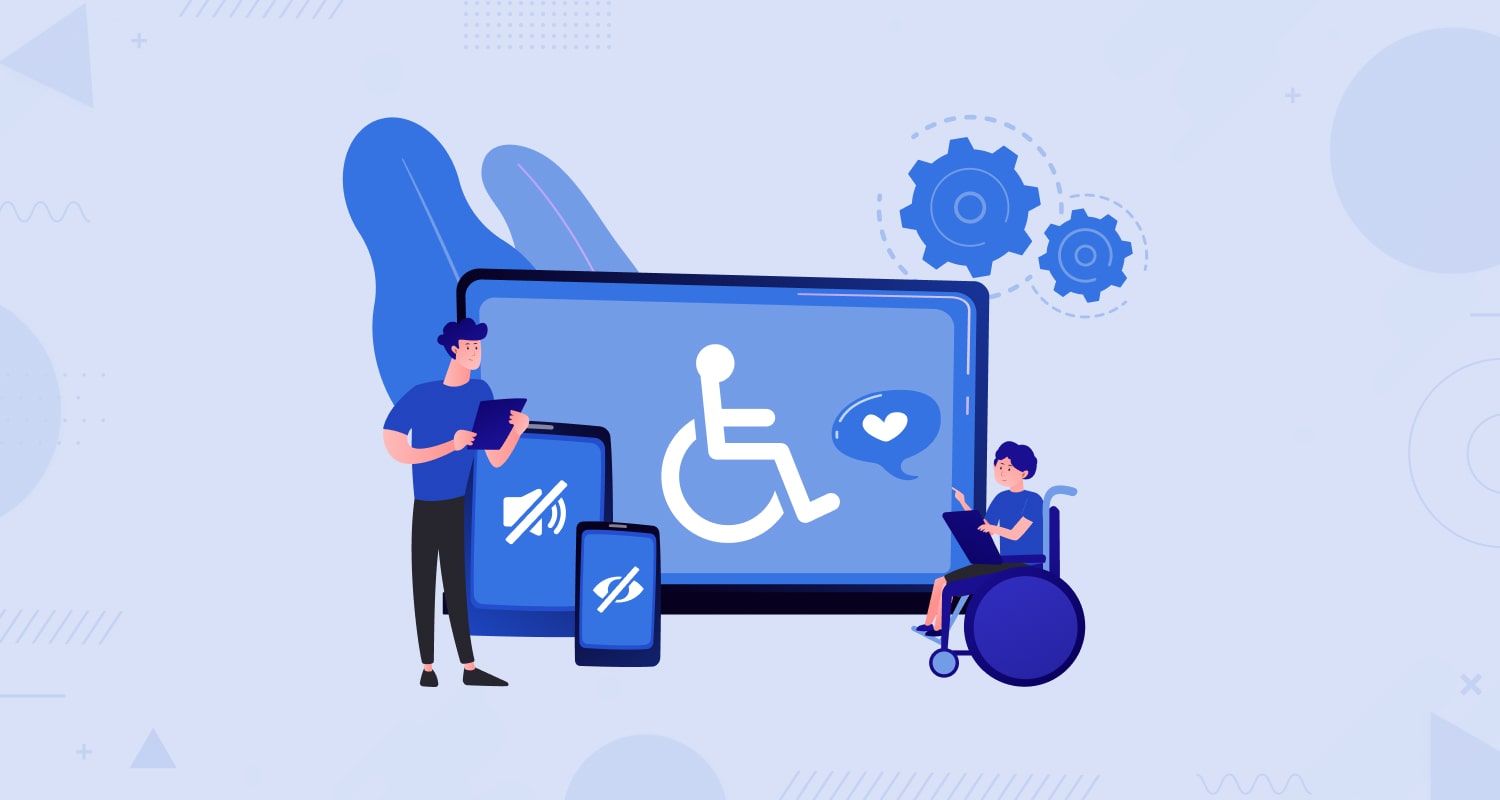In today’s digital era, online learning has become increasingly popular, especially with the COVID-19 pandemic that has forced educational institutions to shift to remote learning. Creating an eLearning website has become an excellent way to deliver educational content to learners anywhere in the world. However, not everyone knows how to create an eLearning website from scratch.
In this blog post, we will guide you through the process of how to build eLearning website. We will discuss the essential features of an eLearning platform, the types of online learning platforms available, and the steps involved in making an eLearning website. With our help, you can create a user-friendly, engaging, and interactive eLearning platform that delivers an excellent learning experience for your learners. So, let’s get started and learn how to create eLearning website!
Why Should You Create an E-Learning Site?
The eLearning industry has been rapidly growing in recent years, and this trend has only been further accelerated by the COVID-19 pandemic. With more people turning to online learning as a viable alternative to traditional classrooms, build e-learning website has become an attractive prospect for entrepreneurs and educational institutions alike.
One of the primary reasons to build an e-learning website is the potential for reaching a wider audience. With a website, you can offer courses and programs to learners anywhere in the world, without being limited by geographical barriers. This opens up a vast market of potential learners who may not have access to traditional educational institutions, or who prefer the convenience and flexibility of online learning.
Another benefit of building an e-learning website is the cost savings associated with it. Compared to traditional classrooms, online learning is typically more affordable, both for learners and institutions. By eliminating the need for physical classrooms and associated overhead costs, institutions can save on expenses, while learners can save on transportation, accommodation, and other costs associated with attending traditional classrooms.
Moreover, building an e-learning website allows institutions to offer more personalized and flexible learning experiences. With a website, learners can access courses and programs at their own pace and on their own schedule, which allows them to balance their education with work, family, or other commitments. E-learning websites can also offer a variety of multimedia resources such as videos, interactive quizzes, and discussion forums that can enhance the learning experience and make it more engaging.
When it comes to web app development for an e-learning website, there are several types of online learning platforms available to choose from, including Learning Management Systems (LMS), Massive Open Online Courses (MOOCs), and course marketplaces. Each platform has its own strengths and weaknesses, so it’s essential to choose the right one that fits your institution’s specific needs and goals.
Online Learning Platform Types:
When it comes to creating an e-learning website, one of the essential decisions to make is choosing the right type of online learning platform. There are several types of online learning platforms available, each with its own features and advantages. Here are some of the most popular types of online learning platforms and examples of e-learning websites that use them.
1. Learning Management Systems (LMS)

Learning Management Systems (LMS) is the most common type of online learning platform used by educational institutions and businesses. LMSs are software applications that provide a framework for managing, delivering, and tracking e-learning courses and programs. They offer features such as course authoring, student management, progress tracking, and reporting.
Examples of e-learning websites that use LMSs include:
- Moodle: Moodle is a free, open-source LMS that is widely used by educational institutions worldwide.
- Canvas: Canvas is a cloud-based LMS that is popular with K-12 schools, higher education institutions, and businesses.
- Blackboard: Blackboard is an enterprise-level LMS that serves more than 20 million users in over 80 countries.
2. Massive Open Online Courses (MOOCs)

Massive Open Online Courses (MOOCs) are online courses that are open to anyone with an internet connection. MOOCs are often offered by prestigious universities and institutions, and they typically include video lectures, interactive quizzes, and discussion forums. MOOCs are free or low-cost and allow learners to access high-quality educational content without enrolling in a formal degree program.
Examples of e-learning websites that offer MOOCs include:
- Coursera: Coursera is a leading MOOC provider that partners with top universities and organizations to offer courses in various subjects.
- edX: edX is a non-profit MOOC provider that offers courses from top universities such as MIT, Harvard, and Berkeley.
- FutureLearn: FutureLearn is a UK-based MOOC provider that offers courses from universities and cultural institutions worldwide.
3. Course Marketplaces

Course marketplaces are e-learning platforms that allow instructors to create and sell their courses to learners. Course marketplaces offer features such as course creation tools, marketing support, and payment processing.
Examples of e-learning websites that use course marketplaces include:
- Udemy: Udemy is a popular course marketplace that offers a wide range of courses in various subjects.
- Skillshare: Skillshare is a course marketplace that focuses on creative and entrepreneurial skills, such as design, writing, and marketing.
- Teachable: Teachable is a course marketplace that allows instructors to create and sell their courses on their own branded websites.
Choosing the right type of online learning platform depends on your institution’s specific needs, goals, and resources. By exploring these web app ideas and e-learning website examples, you can get a better understanding of the different types of platforms available and choose the one that works best for you.
The e-Learning Platform’s Key Features
When it comes to creating an e-learning website, incorporating the essential features of an e-learning platform is crucial for delivering a seamless and engaging learning experience for your learners. Here are some of the essential features of an e-learning platform that you should consider including in your website.
1. Course Management
Course management is a vital feature of any e-learning platform. This feature allows instructors to create and manage courses, including adding course materials, creating assessments, and tracking learner progress. Learners should be able to access the courses they are enrolled in and track their progress through the course.
2. User Management
User management is another critical feature of an e-learning platform. It allows instructors to manage learners’ accounts, including user registration, user profiles, and user roles. This feature enables instructors to monitor and manage the learners’ progress and ensure that learners are accessing the right content.
3. Content Management
Content management is a crucial feature of an e-learning platform, allowing instructors to create and manage course content easily. This feature includes creating and uploading videos, documents, images, and other multimedia files. It also includes organizing the content into modules or units and arranging them in a logical sequence.
4. Assessment and Evaluation
Assessment and evaluation tools are essential features of an e-learning platform. These tools allow instructors to create quizzes, tests, and assignments to evaluate learners’ understanding and progress. It also provides learners with immediate feedback, enabling them to identify areas where they need to improve.
5. Communication Tools
Communication tools are crucial for engaging learners and facilitating collaboration among learners and instructors. These tools include discussion forums, messaging, and video conferencing tools. They enable learners to interact with each other and with instructors, ask questions, and share insights.
6. Reporting and Analytics
Reporting and analytics tools provide instructors with insights into learners’ progress and performance. These tools allow instructors to track learners’ progress, identify areas where learners are struggling and provide targeted feedback and support.
By incorporating these essential features in your e-learning platform, you can create a robust and engaging learning experience for your learners. With these tools, learners can access and navigate courses easily, interact with instructors and other learners, and track their progress through the course. If you’re wondering how to create elearning website, incorporating these essential features is a critical first step.
You may like this: How to Build a Web App?
How Do I Create an E-Learning Website?
Creating an e-learning website can be a daunting task, but with the right approach and guidance, you can make the process easier. Here are some steps to follow to create an e-learning website:
- Define your Target Audience and Learning Goals
Before you start creating your e-learning website, it’s essential to identify your target audience and their learning goals. This will help you tailor the content and design of your website to meet their needs and create a personalized learning experience.
- Choose the Right Platform
Choosing the right platform is critical when creating an e-learning website. You can either use an existing e-learning platform or build a custom platform from scratch. If you’re using an existing platform, make sure it has the essential features you need for your website. If you’re building a custom platform, you’ll need to hire web developers or an education website development service to help you create the platform.
- Create a Course Structure
Once you’ve chosen your platform, it’s time to create a course structure. Your course structure should include a clear outline of the course, including learning objectives, course materials, assessments, and evaluation criteria.
- Develop the Content
Developing quality content is critical for creating an engaging and effective e-learning website. Your content should be engaging, interactive, and relevant to your target audience. Consider incorporating multimedia content, such as videos, images, and infographics, to make the learning experience more engaging.
- Incorporate Essential Features
Incorporate the essential features we mentioned earlier, including course management, user management, content management, assessment and evaluation, communication tools, and reporting and analytics.
- Test and Launch the Website
Before launching your e-learning website, test it thoroughly to ensure it’s functional and free of errors. Make sure it’s optimized for mobile devices and easy to navigate. Once you’ve tested and fine-tuned your website, you can launch it.
Creating an e-learning website requires a lot of planning, development, and testing. It’s essential to work with a team of experienced web developers or an education website development company to help you create a robust and engaging e-learning platform. By following these steps, you can create an e-learning website that provides a personalized, interactive, and effective learning experience for your learners.
How Much Does Web Development for e-Learning Cost?
The cost of e-learning web development can vary depending on a number of factors such as the complexity of the project, the number of features and functionalities required, and the level of customization needed. Typically, a basic e-learning website with standard features such as user registration, a course listing, and payment integration can cost anywhere from $15,000 to $35,000. However, more complex e-learning websites with features such as interactive learning tools, gamification, and virtual reality can cost upwards of $80,000.
It is important to note that the cost of e-learning web development is not solely determined by the developer’s fees. Other expenses such as hosting, maintenance, and ongoing content development should also be factored in when determining the total cost. Therefore, it is advisable to work with a reputable and experienced e-learning web development company that can provide a detailed breakdown of all the costs involved in the project.

CMARIX Expertise
CMARIX is a leading software development company that offers expertise in creating e-learning websites. Their team of skilled developers can create custom e-learning platforms that meet the specific needs of their clients. They offer a wide range of e-learning solutions such as online courses, training programs, and educational portals.
One of the unique features of CMARIX’s e-learning website development services is the ability to create personalized learning experiences. Their team works closely with clients to understand their objectives and design custom e-learning solutions that cater to their unique needs. CMARIX leverages the latest technologies such as artificial intelligence, virtual reality, and gamification to enhance the learning experience.
If you’re looking to create your own e-learning website, CMARIX is the right partner for you. They offer end-to-end services, from design and development to maintenance and support, to ensure that your e-learning platform is successful.
Conclusion
In conclusion, creating an eLearning website requires careful planning, effective design, and seamless functionality. The process involves defining the purpose of the website, selecting the appropriate technology and platform, creating engaging content, and ensuring user-friendliness. The success of an eLearning website depends on various factors such as the quality of the content, ease of use, and accessibility. With the right strategy and tools, creating an eLearning website can be a rewarding experience that provides learners with a convenient and interactive learning experience.
Frequently Asked Questions
How do you create content for eLearning platform?
Creating content for an eLearning platform involves analyzing the learning objectives, designing an engaging format, incorporating interactive elements, and ensuring its accessibility to learners.
How to make an e learning website?
To make an eLearning website, you need to define your purpose, choose a platform, create engaging content, ensure user-friendliness, and test and launch your website.
How can I build my eLearning portal?
To build an eLearning portal, you need to define the purpose of your portal, choose the right platform and technology, create engaging content, and ensure user-friendliness.
How do I build an LMS from scratch?
Building an LMS from scratch requires defining the purpose and functionality, selecting appropriate technology, designing user-friendly interfaces, creating engaging content, and rigorous testing.







